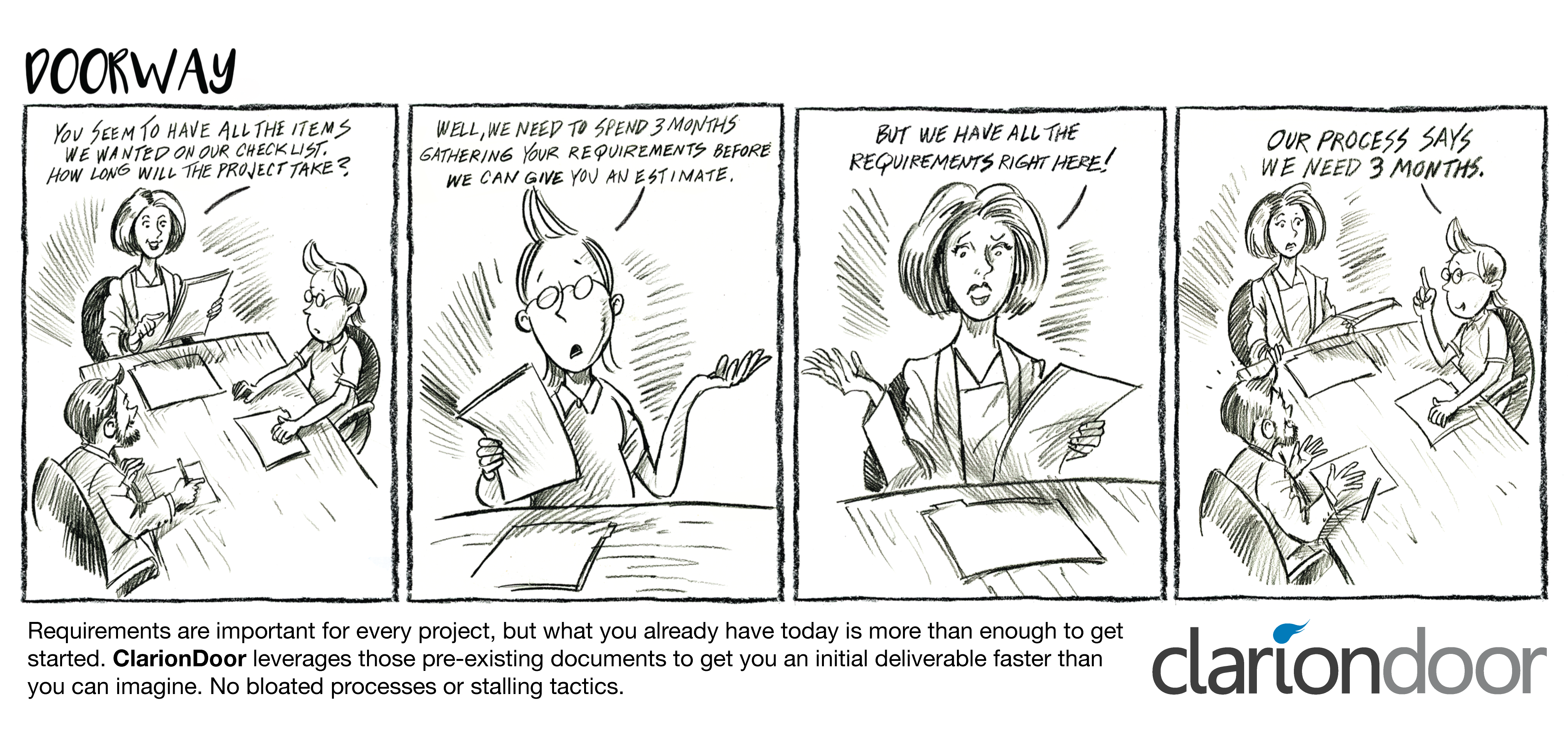Requirements are undoubtedly the most important aspect to the success of any project. However, the process and approach to gathering requirements can make all the difference in how long the project will take to complete.
Regardless if you are using waterfall, Agile, or any other buzz-methodology, requirements gathering can take months or even a year depending on the size and complexity of the project. When vendors say they need several months to gather requirements, that should be your first red flag.
One of the many mistakes that most vendors make is that they believe all requirements need to be defined at the beginning of a project.
There are several problems with this approach, and here are our top 3.
1 Requirements are not forever
The further you get into the project, the more requirements become obsolete. Every deliverable during an implementation will change perspective on future deliverables, thus change the client’s requirements. What the client thought they wanted or needed during the requirements gathering phase is most definitely going to change throughout the project. Furthermore, it makes no sense to gather requirements for something that isn’t even ready to be implemented. Gathering future requirements in the onset of the project is completely premature.
2 Extensive requirements gathering delays delivering value
This is a bit of a no-brainer, but when vendors spend months gathering requirements, they are not delivering anything to the client. This happens regardless of what methodology you are using. You should ask yourself if your business and investment can wait months or even a year before seeing any functional deliverables.
3 Customer probably already has initial requirements
In most situations, the customer already has something documented that can serve as requirements. For whatever reason though, many vendors come into a project thinking that they need to “redefine” or “rewrite” the customer’s requirements. Not only does this take forever to complete, it also provides very little value.
The ClarionDoor Experience
In our experience, we realized that gathering “future” requirements actually delays development and client deliveries. Delivering something functional into your hands as fast as possible enables you to evaluate what those next requirements need to be. The result is a better quality system, and faster timelines to go live.
At ClarionDoor, we recognize the importance of client requirements, but we also understand that it is equally important to deliver fast. That is why all of our projects start with whatever the client already has, and we iterate from there.
One example is our rating and issuance projects. They all start with the basic fundamentals of every insurance product – factors, premium calculations, list of forms, and underwriting rules. Send us what you have and we take it from there, delivering you a functional system within weeks.
Learn more at clariondoor.com and follow us on Twitter and LinkedIn for the latest ClarionDoor updates.

